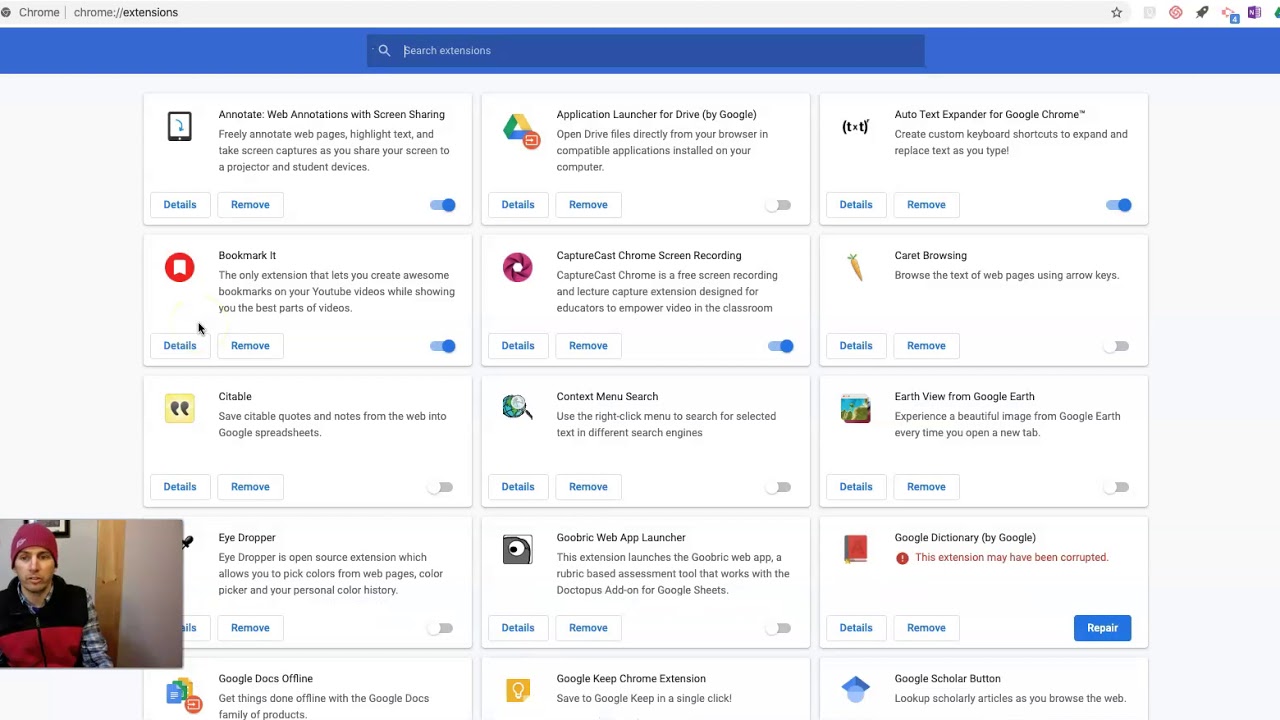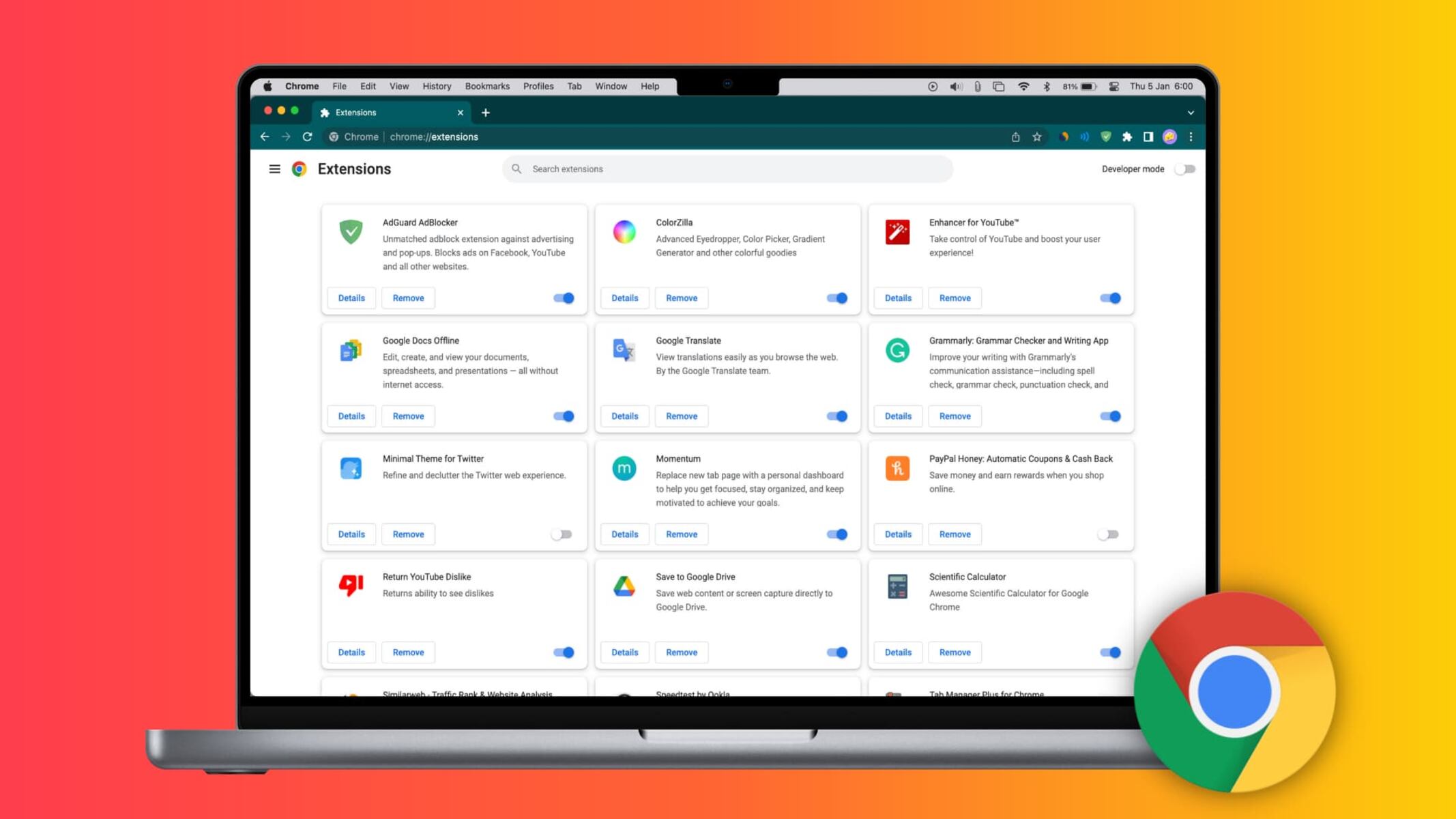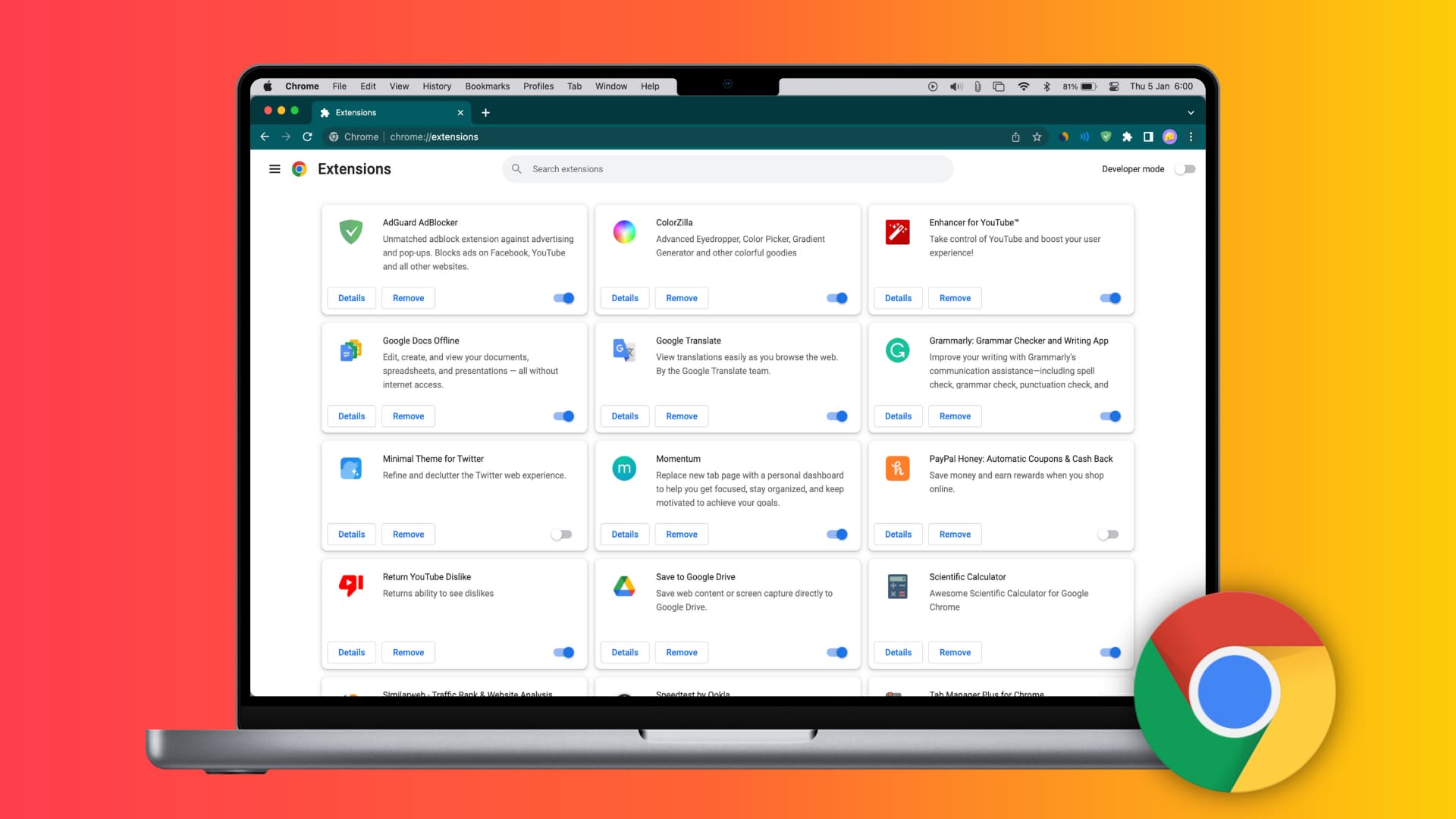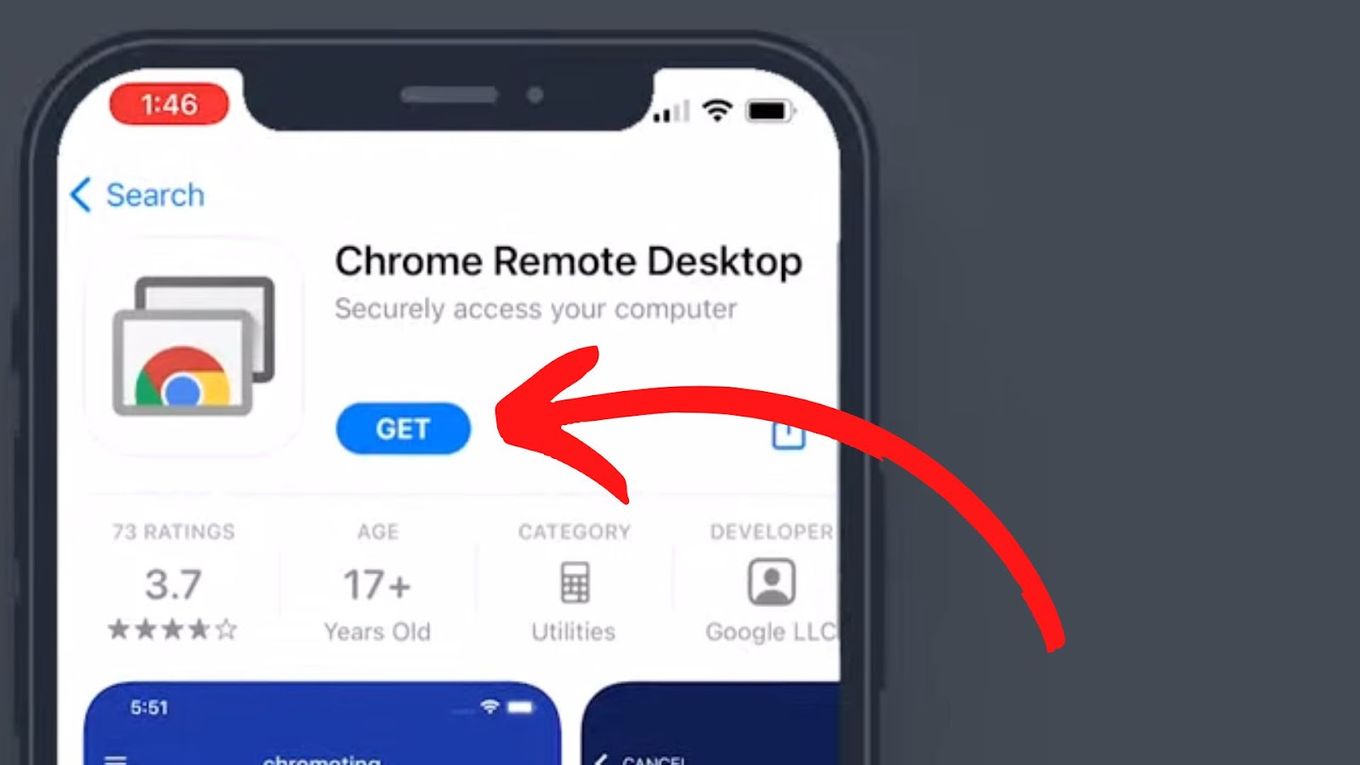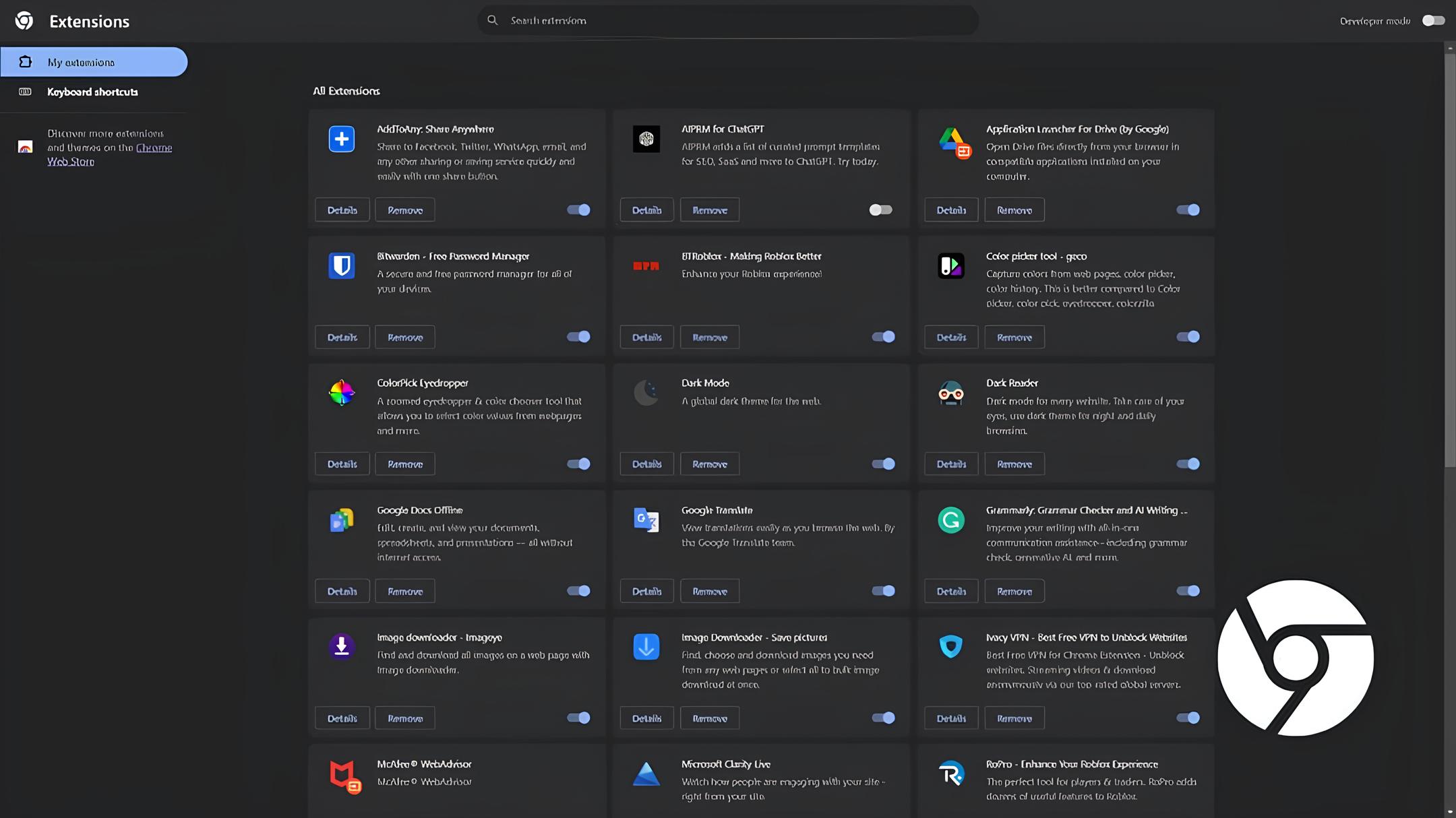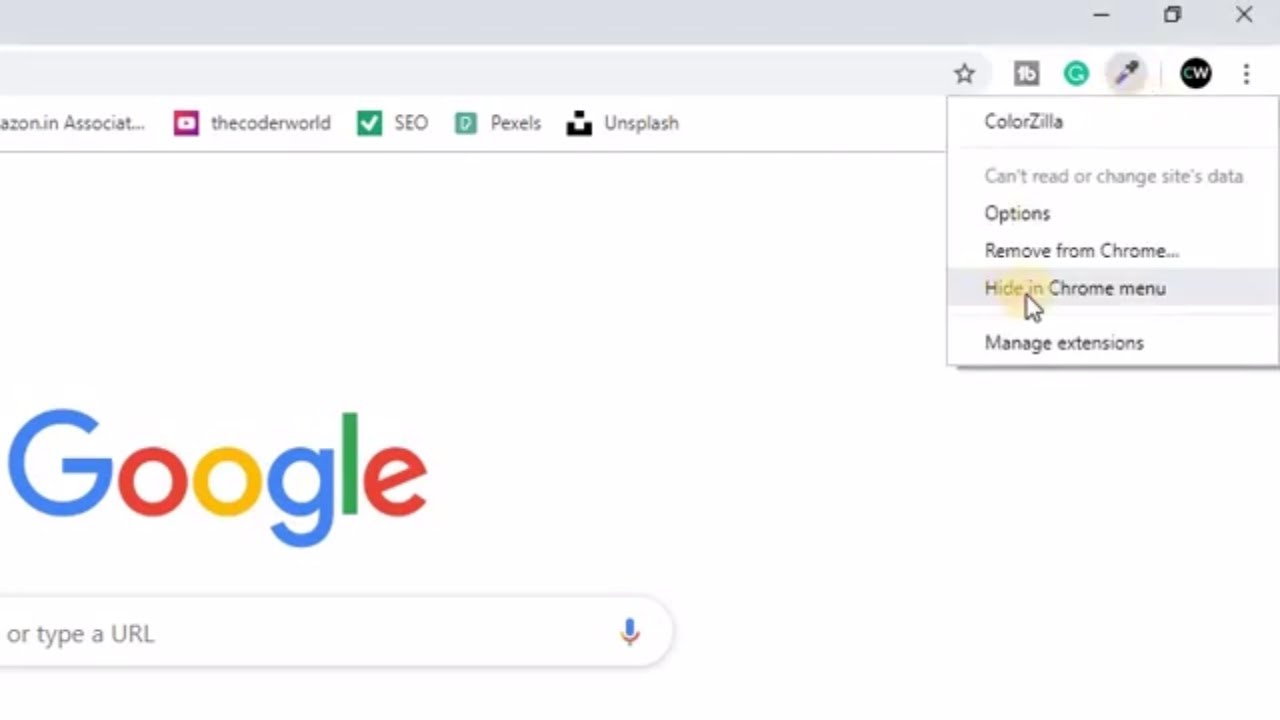Introduction
Google Chrome, the widely popular web browser, offers a plethora of features and functionalities that cater to the diverse needs of its users. One such feature that significantly enhances the browsing experience is the availability of extensions. Chrome extensions are small software programs that can modify and enhance the functionality of the Chrome browser. They are designed to customize the browsing experience, boost productivity, and add new features to the browser.
With a vast library of extensions available in the Chrome Web Store, users can easily find tools to personalize their browsing experience. From ad blockers and password managers to productivity enhancers and entertainment add-ons, the possibilities are virtually endless. Whether you're a student, a professional, or a casual internet user, there's likely an extension tailored to your specific needs.
In this comprehensive guide, we will delve into the world of Chrome extensions, exploring how to manage installed extensions, add new ones, remove unnecessary ones, update existing extensions, and configure extension settings. By the end of this guide, you will have a solid understanding of how to harness the power of Chrome extensions to optimize your browsing experience. So, let's embark on this journey to unlock the full potential of your Chrome browser!
Understanding Chrome Extensions
Chrome extensions are small software programs that can be installed to customize and enhance the functionality of the Google Chrome web browser. These extensions are designed to offer additional features, modify the appearance of web pages, and automate repetitive tasks, thereby improving the overall browsing experience.
Types of Chrome Extensions
-
Functionality Extensions: These extensions add new features or modify existing functionalities of the browser. For example, ad blockers, password managers, and language translators fall into this category.
-
Appearance Extensions: These extensions are designed to modify the visual appearance of web pages. They can change the color scheme, font styles, and layout of websites to suit the user's preferences.
-
Productivity Extensions: Productivity extensions aim to streamline tasks and boost efficiency. They can include to-do lists, note-taking tools, and calendar integrations, among others.
-
Entertainment Extensions: These extensions are focused on providing entertainment and leisure activities, such as games, music players, and video streaming tools.
Installation and Accessibility
Chrome extensions can be easily installed from the Chrome Web Store, which hosts a wide range of extensions across various categories. Once installed, these extensions typically appear as icons in the browser's toolbar, providing quick access to their functionalities. Users can also manage their installed extensions through the browser's settings, allowing them to enable, disable, or remove extensions as needed.
Security and Permissions
When installing an extension, users are prompted to grant certain permissions, such as access to browsing history, tabs, or cookies. It's crucial to review these permissions and ensure that the extension is from a trusted source to prevent potential security risks.
Developer Community
The Chrome extension ecosystem is supported by a vibrant developer community that continuously creates and updates extensions to cater to evolving user needs. This community-driven approach ensures a steady influx of innovative and useful extensions, enriching the browsing experience for Chrome users.
Understanding the diverse types, installation process, security considerations, and the active developer community behind Chrome extensions provides users with the knowledge needed to make informed decisions when selecting and managing extensions for their browsing needs.
Managing Installed Extensions
Managing installed extensions in Google Chrome is essential for optimizing the browsing experience and maintaining a clutter-free browser environment. Whether it's enabling, disabling, or removing extensions, Chrome offers a user-friendly interface to efficiently manage these add-ons.
Accessing the Extensions Menu
To manage installed extensions, users can access the Extensions menu by clicking on the three-dot menu icon in the top-right corner of the browser window, selecting "More tools," and then clicking on "Extensions." Alternatively, users can directly type "chrome://extensions/" in the address bar to access the Extensions page.
Enabling and Disabling Extensions
Upon accessing the Extensions page, users will see a list of all installed extensions along with toggle switches next to each. These switches allow users to enable or disable specific extensions with a simple click. Disabling an extension can be useful when users want to temporarily suspend its functionality without completely removing it from the browser.
Removing Unnecessary Extensions
For extensions that are no longer needed, users can easily remove them from the browser. By clicking the "Remove" button next to an extension, users can uninstall it from their Chrome browser. This process helps declutter the browser and can potentially improve its performance by reducing unnecessary resource usage.
Sorting and Organizing Extensions
Chrome also allows users to organize their extensions by dragging and dropping them within the Extensions page. This feature enables users to arrange their extensions in a preferred order, making it easier to access and manage them based on their usage patterns.
Reviewing Extension Details
By clicking on the details of each extension, users can access additional information such as version numbers, permissions, and options for specific settings. This allows users to gain insights into the functionality and access control of each extension, empowering them to make informed decisions about their usage.
Keeping Extensions Updated
Regularly updating extensions is crucial for ensuring optimal performance and security. Chrome automatically updates extensions in the background, but users can also manually check for updates by visiting the Extensions page and clicking the "Update" button if available.
By effectively managing installed extensions, users can tailor their browsing experience to their specific needs, maintain a secure browsing environment, and ensure that their browser operates smoothly and efficiently. This proactive approach to extension management empowers users to harness the full potential of Chrome's extension ecosystem while maintaining control over their browsing environment.
Adding New Extensions
Adding new extensions to Google Chrome is a straightforward process that allows users to expand the functionality of their browser to better suit their browsing needs. With a vast array of extensions available in the Chrome Web Store, users can easily discover and install tools that cater to their specific requirements.
Browsing the Chrome Web Store
To add a new extension, users can navigate to the Chrome Web Store, which can be accessed by typing "chrome://extensions/" in the address bar or by clicking on the three-dot menu icon in the top-right corner of the browser window, selecting "More tools," and then clicking on "Extensions." From there, users can click on the "Open Chrome Web Store" link to explore the wide range of available extensions.
Searching and Selecting Extensions
The Chrome Web Store features a search bar and various categories, allowing users to browse and search for extensions based on their interests and needs. Whether it's productivity tools, ad blockers, language translators, or entertainment add-ons, users can find extensions tailored to their preferences. Upon finding a desired extension, users can click on it to view detailed information, including user reviews, ratings, and a description of its features.
Installing Extensions
Once a user has found an extension they wish to install, they can simply click the "Add to Chrome" button on the extension's page. A confirmation dialog will appear, prompting the user to confirm the installation by clicking "Add extension." After confirmation, the extension will be downloaded and added to the browser, typically appearing as an icon in the browser's toolbar or within the Extensions menu.
Managing Newly Added Extensions
After installing a new extension, users can manage its settings and permissions by accessing the Extensions page. Here, users can review the details of the newly added extension, configure its options, and ensure that it aligns with their preferences and security considerations.
Exploring New Possibilities
By adding new extensions, users can unlock a world of possibilities to enhance their browsing experience. Whether it's streamlining tasks, blocking intrusive ads, or accessing new productivity tools, the addition of extensions allows users to tailor their browsing environment to their liking.
Adding new extensions to Google Chrome is a seamless process that empowers users to customize their browsing experience and access a diverse range of tools and functionalities. By exploring the Chrome Web Store and selectively adding extensions that align with their needs, users can elevate their browsing experience and maximize the potential of their Chrome browser.
Removing Extensions
Removing unnecessary extensions from your Google Chrome browser is a crucial aspect of maintaining a streamlined and efficient browsing experience. Over time, users may accumulate a multitude of extensions, some of which may no longer serve a purpose or may even contribute to browser clutter and performance issues. By removing such extensions, users can declutter their browser environment and potentially improve its speed and responsiveness.
To remove an extension from Google Chrome, users can follow a simple process:
-
Accessing the Extensions Menu: Begin by clicking on the three-dot menu icon in the top-right corner of the browser window. From the dropdown menu, select "More tools," and then click on "Extensions." This will direct you to the Extensions page, where all installed extensions are listed.
-
Identifying Unnecessary Extensions: Upon accessing the Extensions page, users can review the list of installed extensions and identify those that are no longer needed or are causing unwanted behavior. It's essential to assess each extension's utility and impact on browsing performance before deciding to remove it.
-
Removing the Extension: Next, locate the extension that you wish to remove and click on the "Remove" button associated with it. A confirmation dialog will appear, asking if you want to remove the extension. Click "Remove" to confirm the uninstallation process.
-
Verifying Removal: Once the extension is removed, it will no longer be active in the browser. Users can verify the successful removal by checking the list of installed extensions on the Extensions page.
By removing unnecessary extensions, users can effectively declutter their browser environment, potentially reducing memory and resource usage. This, in turn, can contribute to a smoother and more responsive browsing experience. Additionally, removing unused extensions can enhance browser security by minimizing the potential attack surface and reducing the risk of conflicts between extensions.
Regularly reviewing and removing unnecessary extensions is a proactive approach to maintaining a well-organized and efficient browser environment. It allows users to tailor their browsing experience to their specific needs while ensuring that their Chrome browser operates optimally.
Updating Extensions
Keeping extensions updated is essential for ensuring optimal performance, security, and compatibility with the latest browser features. Google Chrome automatically updates extensions in the background to provide users with the most up-to-date versions. However, users can also manually check for updates and initiate the update process for individual extensions.
To check for updates and manage extension updates, users can follow these simple steps:
-
Accessing the Extensions Menu: Begin by clicking on the three-dot menu icon in the top-right corner of the browser window. From the dropdown menu, select "More tools," and then click on "Extensions." This will direct you to the Extensions page, where all installed extensions are listed.
-
Checking for Updates: On the Extensions page, users can look for the "Developer mode" option in the top-right corner of the page. Enabling developer mode provides additional options, including the ability to manually check for updates for all installed extensions.
-
Updating Individual Extensions: After enabling developer mode, users can click on the "Update" button next to each extension to manually check for updates. If an update is available, the extension will be updated to the latest version, ensuring that users have access to the newest features and security enhancements.
-
Automatic Background Updates: Chrome's automatic background updates ensure that users receive the latest versions of extensions without manual intervention. This seamless process helps keep extensions up to date, providing users with improved functionality and security without requiring their active involvement.
Regularly updating extensions is crucial for maintaining a secure and efficient browsing experience. Updated extensions often include bug fixes, performance improvements, and security patches, addressing potential vulnerabilities and enhancing overall stability. By staying proactive in managing extension updates, users can ensure that their browsing environment remains optimized and secure, allowing them to make the most of the diverse functionalities offered by Chrome extensions.
By understanding the process of updating extensions and actively managing their update status, users can harness the full potential of their installed extensions while benefiting from the latest features and security enhancements. This proactive approach contributes to a seamless and secure browsing experience, empowering users to make the most of the extensive extension ecosystem available in Google Chrome.
Configuring Extension Settings
Configuring extension settings in Google Chrome allows users to personalize the behavior and functionality of their installed extensions to align with their specific preferences and browsing habits. While many extensions come with default settings that cater to a broad user base, customizing these settings can enhance the overall user experience and streamline the usage of extensions.
Upon installing an extension, users can often access its settings by right-clicking on the extension's icon in the browser toolbar or by navigating to the Extensions page and clicking on the "Details" button for the specific extension. This opens a window where users can explore and adjust various settings and options offered by the extension.
The configuration options for extensions can vary widely based on their functionalities. For example, a password manager extension may allow users to customize autofill settings, security preferences, and synchronization options, while a language translation extension may offer settings related to preferred languages and translation behavior.
Common configuration settings that users may encounter when customizing extensions include:
-
General Preferences: Many extensions provide general settings that allow users to customize the extension's behavior, appearance, and interaction with other elements of the browser.
-
Privacy and Security: Extensions that interact with sensitive data, such as passwords or browsing history, often include settings related to privacy and security. Users can configure permissions and access controls to align with their privacy preferences.
-
Notifications and Alerts: Some extensions offer notification settings, allowing users to control how and when they receive alerts and updates from the extension.
-
Customization Options: Extensions that modify the appearance or functionality of web pages may include customization options, such as themes, color schemes, or layout preferences.
-
Integration and Compatibility: Certain extensions may provide settings related to integration with other applications or services, as well as compatibility options for specific websites or platforms.
By configuring extension settings to suit their individual needs, users can tailor the behavior and functionality of extensions to align with their browsing habits and preferences. This level of customization empowers users to optimize their browsing experience and leverage the full potential of the extensions they have installed.
Regularly reviewing and adjusting extension settings ensures that users are making the most of the features offered by their extensions while maintaining control over their browsing environment. This proactive approach allows users to harness the power of extensions in a way that best serves their unique requirements and enhances their overall browsing experience.
Conclusion
In conclusion, Google Chrome's extensive library of extensions offers a wealth of opportunities to customize and enhance the browsing experience. By understanding how to manage installed extensions, add new ones, remove unnecessary ones, update existing extensions, and configure extension settings, users can fully harness the potential of Chrome's extension ecosystem.
Effective management of installed extensions is essential for maintaining a clutter-free browser environment and optimizing performance. By enabling, disabling, and removing extensions as needed, users can tailor their browsing experience to their specific requirements while ensuring a secure and efficient browsing environment.
Adding new extensions from the Chrome Web Store allows users to explore a diverse range of tools and functionalities, unlocking new possibilities to streamline tasks, block intrusive ads, and access productivity tools. This process empowers users to customize their browsing experience and access a wide array of features tailored to their preferences.
Regularly updating extensions is crucial for ensuring optimal performance, security, and compatibility with the latest browser features. By staying proactive in managing extension updates, users can benefit from the newest features and security enhancements, contributing to a seamless and secure browsing experience.
Configuring extension settings provides users with the flexibility to personalize the behavior and functionality of their installed extensions. This level of customization empowers users to optimize their browsing experience and leverage the full potential of the extensions they have installed, aligning with their unique browsing habits and preferences.
By actively managing and customizing their extensions, users can create a personalized and efficient browsing environment that aligns with their specific needs and preferences. This proactive approach allows users to make the most of the diverse functionalities offered by Chrome extensions while maintaining control over their browsing experience.
In essence, Chrome extensions serve as powerful tools for enhancing productivity, improving security, and personalizing the browsing experience. By mastering the art of managing and customizing extensions, users can unlock the full potential of their Chrome browser, creating a tailored and efficient browsing environment that aligns with their individual preferences and requirements.







